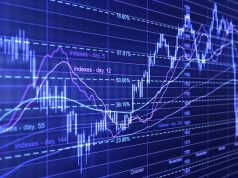Forex trading in the UK demands more than just a basic market understanding. To excel, traders must delve into advanced methods requiring precision, insight, and a strategic approach. This article will explore sophisticated strategies tailored for the forex market, providing traders with the tools to trade precisely and navigate this intricate financial landscape.
Utilising advanced technical analysis
Technical analysis is a cornerstone of successful forex trading. It involves studying historical price movements and chart patterns to identify potential future price movements. For traders in the UK forex market, utilising advanced technical indicators such as Fibonacci retracements, the Ichimoku cloud, and Elliott Wave theory can provide deeper insights into market trends and potential turning points.
By mastering advanced technical analysis, traders can identify critical levels of support and resistance, spot trend reversals, and make more informed decisions about entry and exit points. This precision can lead to more accurate trades and improved risk management strategies, ultimately enhancing the trader’s overall performance.
Leveraging advanced charting techniques
Advanced charting techniques go beyond basic candlestick patterns and trendlines. In the UK forex market, traders can benefit from tools like Heikin-Ashi charts, Renko charts, and Point and Figure charts. These alternative charting methods offer unique perspectives on price movements and can help traders filter out market noise.
For example, Heikin-Ashi charts provide a smoother representation of price trends by factoring in previous candlestick data. This can be particularly useful for identifying and following directions. By incorporating these advanced charting techniques into their analysis, UK forex traders can gain a competitive edge in a crowded and dynamic market.
Harnessing the power of algorithmic trading
Algorithmic trading, or automated trading, involves computer programs executing trades based on predefined criteria. In the forex market, algorithmic trading can provide precision and efficiency, especially in implementing complex strategies or managing multiple transactions simultaneously. Traders can develop algorithms incorporating technical indicators, price action patterns, and news sentiment to guide their trading decisions.
For instance, an algorithm could be programmed to initiate a trade when a specific combination of indicators aligns, providing a systematic approach to trading. It’s crucial for traders to rigorously test and optimise their algorithms to ensure they perform effectively in real-time market conditions. By harnessing the power of algorithmic trading, forex traders in the UK can execute trades with precision and efficiency.
Diversifying with cross-currency pairs
These pairs involve trading currencies that do not include the US dollar. By understanding the relationships between these currencies, traders can diversify their exposure and capitalise on specific regional economic developments.
For example, if a trader anticipates strengthening the Australian economy relative to the Japanese economy, they might choose to trade the AUD/JPY pair. By recognizing the factors influencing both currencies, traders can precisely navigate cross-currency pairs and seek opportunities beyond the traditional significant couples.
Mastering risk-reward ratios for optimal outcomes
Maintaining a favourable risk-reward ratio is essential for long-term success in forex trading. This ratio represents the potential profit a trader expects to gain for every dollar they risk on a trade. A common rule of thumb is to aim for a risk-reward ratio of at least 1:2, meaning the potential profit is at least twice the possible loss.
By consistently adhering to favourable risk-reward ratios, traders can weather losses and potentially enhance their profitability. This approach ensures that even if a trader experiences a series of losses, a single successful trade can offset them. Through disciplined risk management and optimising risk-reward ratios, forex traders in the UK can increase their likelihood of success over the long term.
Embracing dynamic market conditions
The forex market is notorious for its ever-changing nature, with conditions shifting rapidly. Traders in the UK must be adept at recognizing changing trends and adjusting their strategies accordingly. This necessitates a keen eye on economic indicators, geopolitical events, and central bank policies.
Keeping a pulse on market sentiment through news feeds and social media can provide valuable insights into shifts in market behaviour. Traders who adapt and respond to changing conditions are better positioned to seize opportunities and mitigate potential losses.
On that note
Trading forex in the UK market requires a deep understanding of advanced methods and a commitment to precision. From advanced technical analysis and charting techniques to algorithmic trading, cross-currency pairs, and optimising risk-reward ratios, each approach provides a unique tool for traders to enhance their precision and effectiveness.
By incorporating these advanced methods into their trading arsenal, traders can confidently navigate the complexities of the forex market. Remember, trading involves risk, and there are no guarantees of profit. A disciplined and well-informed approach is essential for long-term success in the financial markets.
















